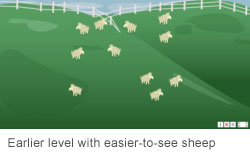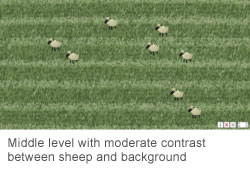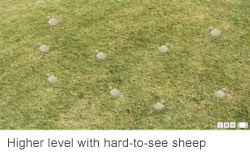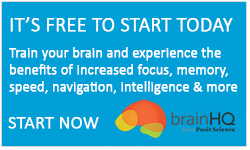![]() At a playground, imagine you are watching your child run around with other children. You turn your head for a moment to chat with another parent and after glance back, you realize your child is no longer there. In order to locate your child before he or she gets into trouble you need to be able to make observations very quickly and change your search.
At a playground, imagine you are watching your child run around with other children. You turn your head for a moment to chat with another parent and after glance back, you realize your child is no longer there. In order to locate your child before he or she gets into trouble you need to be able to make observations very quickly and change your search. 
Or imagine you are searching through your spice rack for basil while preparing dinner. You’re halfway through your hunt when a dog barking outside interrupts you. After glancing out the window you return your attention to the spice rack. You’ve already searched through half the spice rack for the basil but do you remember where you left off? Or do you have to begin your search all over again?
You are constantly scanning scenes around you everyday just like the examples we shared above. Being able to spot important changes when you return your attention to a scene or continuing your scan from where you left off is an incredibly important skill. This skill is severely hindered in people with cognitive problems.
Challenging your ability to maintain the details of a scene in your working memory is the goal of the Scene Crasher exercise. This, in scientific terms, is referred to as ‘delayed-recognition span’. In this exercise, images of several items including keys and sheep will flash on your screen. The items will disappear and then reappear but with an additional item in tow. Being able to successfully complete this exercise requires you to remember the scene from the very first flash well enough to identify any changes that have occurred once the scene reappears with new items.
In order to erase your visual impression of the first scene (which, without even using your memory, can persist for a short time) a fuzzy screen will briefly appear between the two scenes. This fuzzy scene approach ensures that what is truly getting the workout is your working memory.
The exercise will change in five different ways as you level up:
- The items will become harder to see on the background by changing the ‘visual emphasis’.
- The scene will flash on screen for shorter periods of time.
- The items will be arranged in an increasing display area by moving further from the center of the screen.
- The items you need to track will change (as an example from keys to sheep).
- The number of items displayed within each scene will increase (for example you may need to remember the placement of 6 sheep in the first round but will need to remember more and more as you improve).







 English
English
 Français
Français


